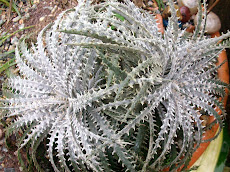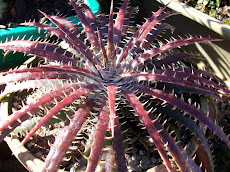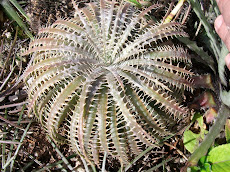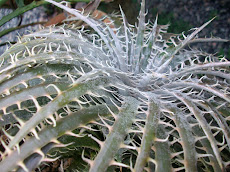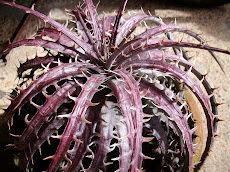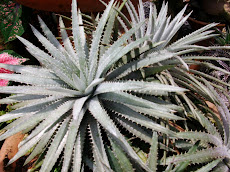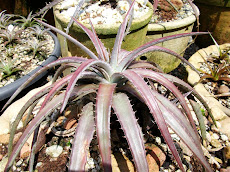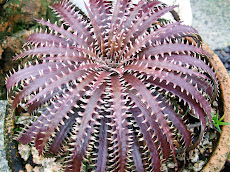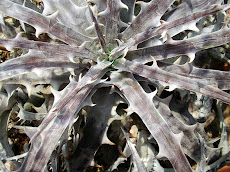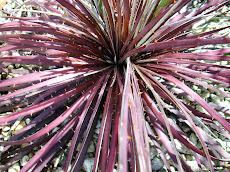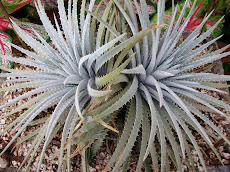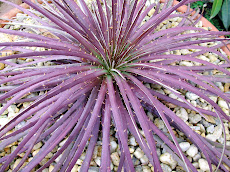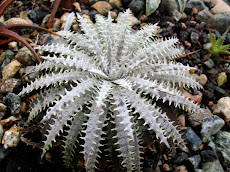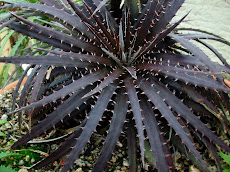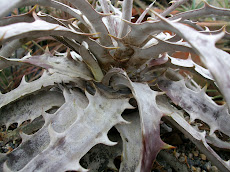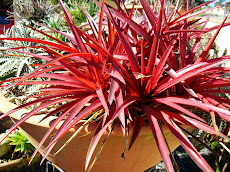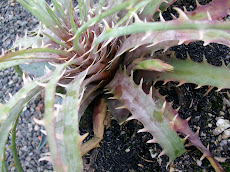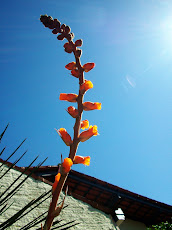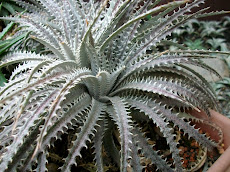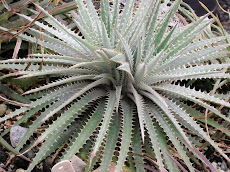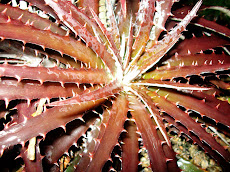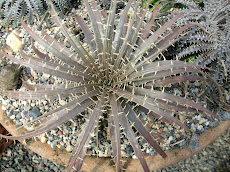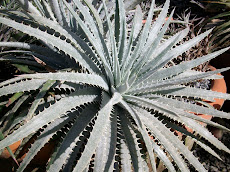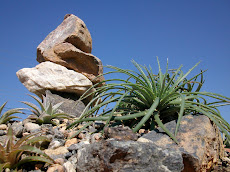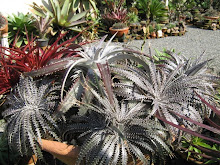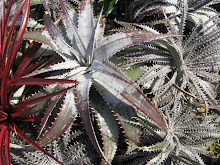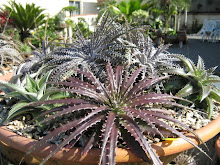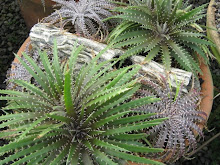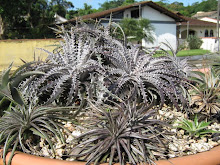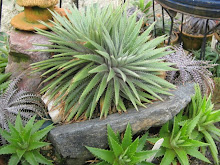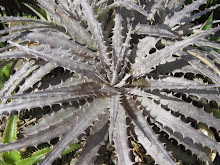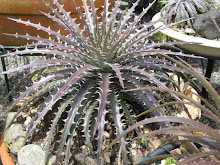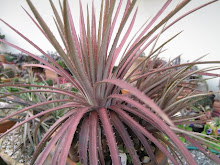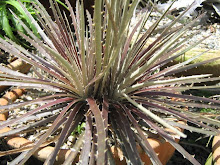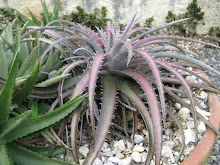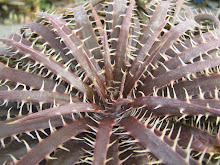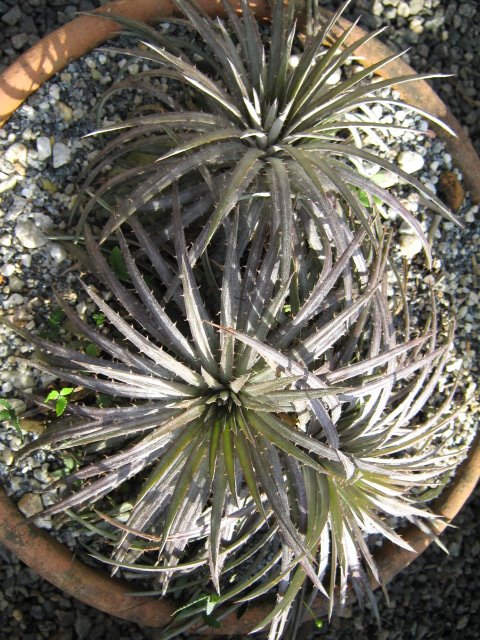Dec 22, 2019
Oct 29, 2019
Encholirium seed pods, no flower is missed.
Above, this plant produced longer flower peduncles, the flower stalk is green colored.
Leaves bear more and bigger spines
In nature, these flowers are pollinated mainly by bats, here "batman"
did the work sucessfully and no flower is missed.
Bellow, shorter peduncles, darker Flower stalk.
Leaves bear fewer spines.
Two different looking Encholirium sp Serra do Cabral
Similar but not equal.
Under cultivation here in Santa Catarina, they take too much rain and
most of their scales are washed away
Oct 22, 2019
Oct 13, 2019
Encholirium sp Serra do Cabral - Minas Gerais
Petals are insignificant and the flowers are visited mainly by bats and small rodents.
We hardly see any insect here. Flores produce abundant nectar.
Hand pollinated flowers.
.
Oct 7, 2019
Sep 29, 2019
Sep 26, 2019
Enchplirium sp from Serra do Cabral-MG in bloom in my garden
I am surprised, proud and happy
The flower stalk is very young. It will grow straight to the sky...
I never saw one in nature this was sent to me by a friend.
Nibert Lucas
these long spals on the base of the stem are the latest leaves produced.
The flower stalk carries them along
Ohhhh.. so many flowers, seeds and dream are about happening
Unlike Dyckias, Encholiriuns produce central and terminal flower stems. When blooming, the whole plant lengthens, stretches and carries on the floral stem the last leaves produced, making them into basal sepals, those well elongated at the base of the stem. The floral sepals are now thickened forming the stem head. Soon each will have a flower to show. In Encholiriuns, floral stems do not produce branches.

The plant is a luxury, it looks like a robust Dyckia goehringii.

Here in nature pictured by Nibert Lucas
What about Encholirium nibertii?

Sep 25, 2019
Dyckia apiunensis, now a valid true species
Flowers close to show under cultivation.
Dom Bosco Peak downtown Apiúna in Santa Catarina State, Brazil.
This plant lives is a vertical wall. This plant iusone of three I found removed from the granitic rock some 200meters down hill.
Dyckia apiunensis was describe by Dr. pierre Braun and me and published
in Germany. Dried exemplar deposited here in Itajaí Herbário Barbosa Rodrigues.
Let us know a bit more about one of the prettiest plants on Earth, Dyckia brevifolia:
Dyckia brevifolia ( Latin for short leafed)
This wonder of nature is native to my Brazilian State, Santa Catarina , the second southernmost Brazilian State. We have snow in winter on the highest parts and frosts mild to severe are not uncomon where this beauty lives. It is a reophitic one and lives close to the Itajaí river water so she is always safe from deep cold as the fast running waters prevent the temperature to go freezing on Dyckias plants. I was born, 1954, in Rio do Sul where the Itajaí river begins from the meeting of Itajaí do Norte river and Itajaí do Sul river. Dyckia brevifolia begin to appear some 36 km down the flowing from Rio do Sul. It first appears where the river cascates in a place known as Subida in Apiúna County and can be seem where the river runs fast amid rocks til Blumenau the biggest city by this beautiful river.
Brazil map and its States
the dot represents where is Dyckia brevifolia place .
Santa Catarina map and where Dyckia brevifolia can be found.
From Subida to Blumenau, this is where one can see Dyckia brevifolia in nature.
This picture says almost all on Dyckia brevifolia and the word rheophyte. See the beautul clumps ont the rocks close to the fast white waters. This plant shares it habitarwith another rheophytic plant Raulinoa echinata, it is a small bush and it lives on the very same conditions so they can be found living together Pe.Raulino Reitz studied both plants .
During floods all Dyckias keep submerged for weeks .
Flowers stalks are emerging...
A new clump is forming
New plants prove the habitat is preserved
Here they grow amid Raulinoa echinata.
Some plants are clearly xanthochromic.
Dragwood brought by the latest flood.
Subscribe to:
Posts (Atom)

































































